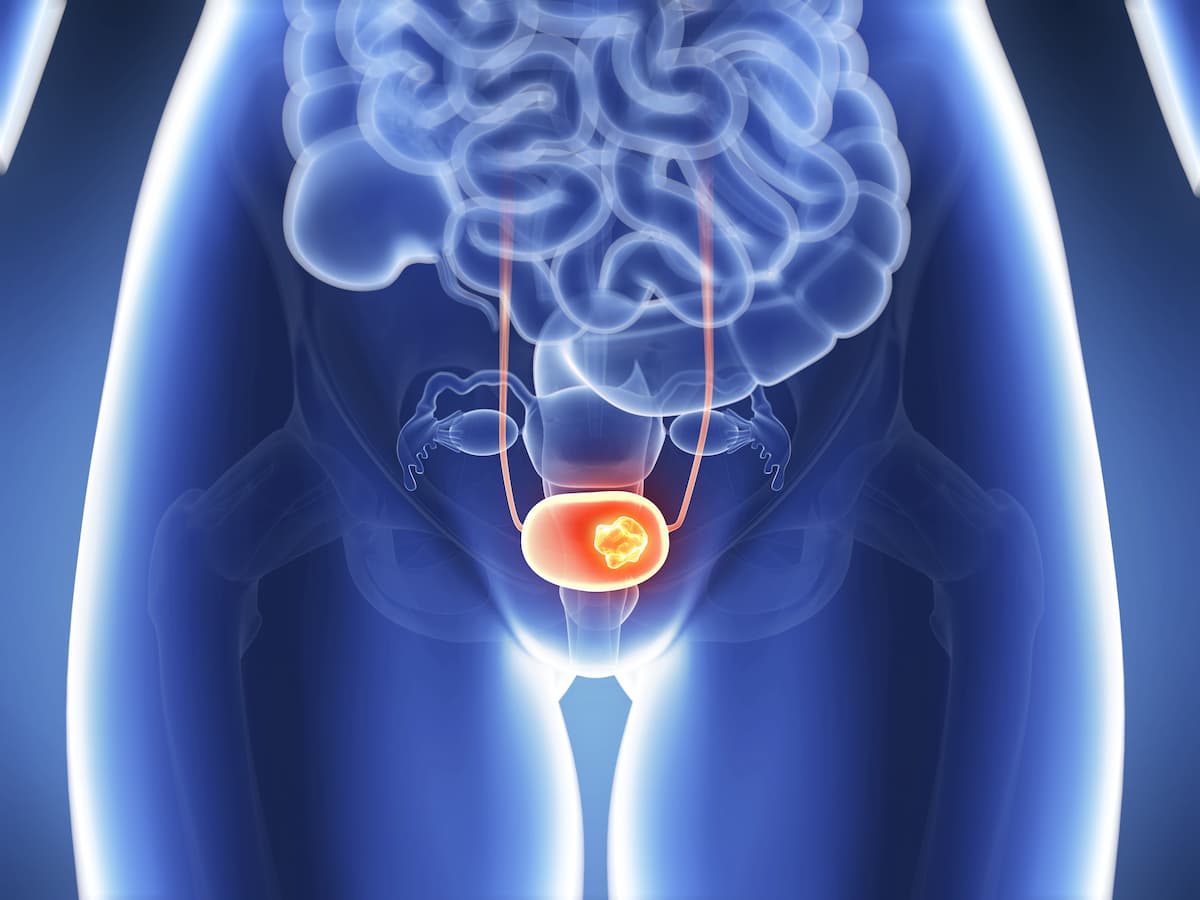Transurethral Resection Plus Triplet Therapy Yields CRs in MIBC
Almost half of patients with muscle-invasive bladder cancer in a phase 2 trial had clinical complete responses following transurethral resection of bladder tumors plus nivolumab and chemotherapy.
Gemcitabine, cisplatin, and nivolumab (Opdivo) following transurethral resection of bladder tumors yielded positive clinical complete responses (cCR) and survival among patients with muscle-invasive bladder cancer (MIBC), according to data from the phase 2 HCRN GU 16-257 trial (NCT03558087) that were presented at the 2023 Genitourinary Cancers Symposium.
“These findings may help advance a more personalized approach to the management of MIBC, leveraging clinical response-based risk stratification," according to an expert from The Tisch Cancer Institute.
© SciePro - stock.adobe.com.

There was a cCR in 43% (95% CI, 32%-55%) of patients, and nearly all of these patients were alive 2 years after treatment.
In the 76-patient phase 2 study, those achieving a cCR (33 of 76) were eligible to forego cystectomy and continue 240-mg maintenance nivolumab monotherapy every 2 weeks for 8 cycles followed by surveillance.
In the study, cCR was rigorously defined, noted lead investigator Matt D. Galsky, MD, as normal urine cytology, cystoscopy, and imaging. Additionally, all patients were biopsied, either from the visible tumor or a recommended template of the bladder. The positive predictive value for cCR was 0.96 (95% CI, 0.89-1.0), which strongly indicated a predictive treatment benefit.
“Standardized clinical response assessment with a uniform cCR definition identified patients with highly favorable outcomes and facilitated bladder sparing,” Galsky, from The Tisch Cancer Institute, Mount Sinai, New York, said during a presentation of the results. “These findings may help advance a more personalized approach to the management of MIBC, leveraging clinical response-based risk stratification.”
Most patients enrolled were male (79%) and the median age was 69 years. All patients in the study were cisplatin-eligible with cT2 (56%), cT3 (32%), or cT4a (12%) urothelial bladder cancer that was N0 and M0. Following TURBT, cisplatin, gemcitabine, and nivolumab were administered for 4 cycles followed by restaging to assess cCR. Of the initial 76 patients, 72 underwent restaging. Of those achieving cCR, only 1 received an immediate cystectomy (ypTaN0M0). In the non-cCR arm, 34 received immediate cystectomy and 5 received non-protocol–defined therapy.
Serial cystoscopies were completed at a predefined time, to detect recurrences. When a local recurrence was detected, salvage cystectomy was utilized. Overall, there were 9 patients who achieved a cCR and received a subsequent cystectomy at recurrence. “There is a different natural history in patients who have a clinical CR and develop a recurrence and patients who don't have a response,” noted Galsky.
The overall survival (OS) for all of those achieving a cCR was 100% at 2 years (CI not yet available). Most patients achieving a cCR also remained metastasis-free at 2 years, with a metastasis-free survival (MFS) of 96.6% (95% CI, 78.0%-99.6%). The bladder-intact MFS rate was 72.2% (95% CI, 53.2%-84.5%). In those without a cCR who received immediate cystectomy, the 2-year OS rate was 75.8% (95% CI, 58.1%-86.8%) and the 2-year MFS rate was 74.6% (95% CI, 57.9%-85.5%). MFS and OS were both statistically superior in the cCR group (P = .007 and P = .003, respectively).
“If you give switch maintenance immune checkpoint blockade in the metastatic setting, that improves outcomes, including survival,” said Galsky. “It's easy to lose sight of the fact that there is this continuation of single-agent immunotherapy in this program that could drive long-term outcomes that are not captured in the clinical CR.”
At the point of restaging, vesical imaging-reporting and data system scores of 3 to 5 on blinded central review of MRI was associated with inferior bladder-intact MFS compared with a score of 1 to 2 (HR, 4.5; P <.01). Additionally, these higher scores were also associated with inferior MFS regardless of cystectomy status (HR, 19.3; P <.01).
Several known biomarkers at the time of the initiation of the study in 2018 were also assessed, to further find correlative markers of response. Overall, no significant association was found for ERCC2, ATM, FANCC, or RB1 alterations and immediate cystectomy or 2-year bladder-intact MFS. A high mutational burden of ≥10 mutations/mb was significantly associated with immediate cystectomy and bladder-intact MFS (P = .02).
Funding for the study was provided by Bristol Myers Squibb and the V Foundation.
Reference
Galsky MD, Daneshmand S, Lewis SC, et al. Co-primary endpoint analysis of HCRN GU 16-257: Phase 2 trial of gemcitabine, cisplatin, plus nivolumab with selective bladder sparing in patients with muscle-invasive bladder cancer (MIBC). J Clin Oncol. 2023;41(suppl 6):447. doi:10.1200/JCO.2023.41.6_suppl.447